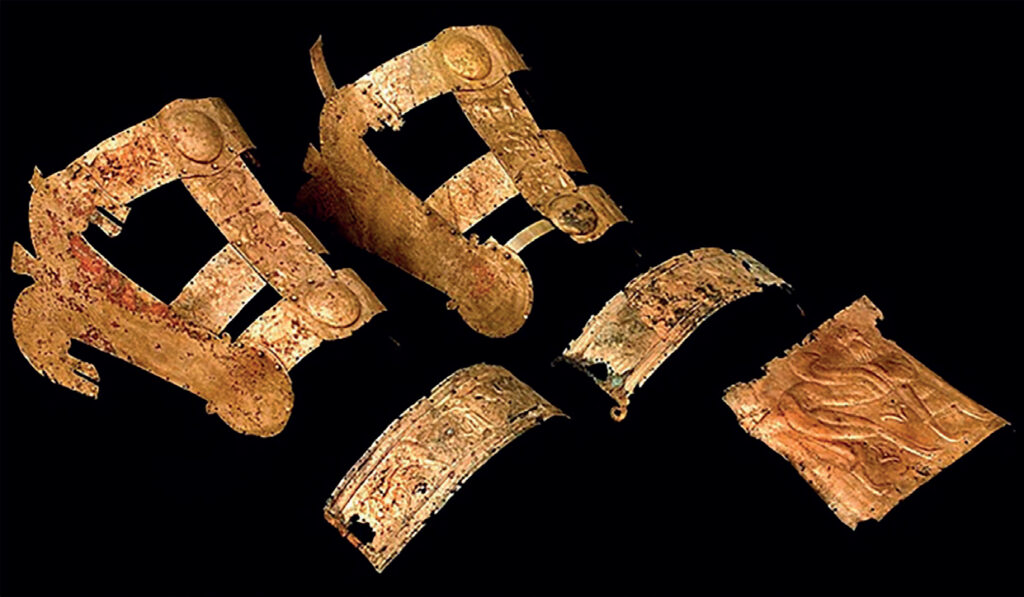Archaeology
 Within the ARRM1 campus, at an elevation of 51 m.a.s.l., overlooking the Via Salaria and the Tiber River, lies the necropolis of Colle del Forno, the outermost core of the burial ground of the site of ancient Eretum (today Casa Cotta, in the municipality of Montelibretti) one of the most important cities in the region whose earliest settlements date back to the 7th century BCE.
Within the ARRM1 campus, at an elevation of 51 m.a.s.l., overlooking the Via Salaria and the Tiber River, lies the necropolis of Colle del Forno, the outermost core of the burial ground of the site of ancient Eretum (today Casa Cotta, in the municipality of Montelibretti) one of the most important cities in the region whose earliest settlements date back to the 7th century BCE.
The necropolis in total consisted of 40 underground chamber tombs and one pit burial. Hypogeous chamber tombs feature loculi excavated on the walls and a long access corridor, a type widely attested in Faliscan-Capenate and Veian territory.
As shown by the presence of more recent burials together with older ones, the graves have been reused over the centuries; in fact, the use of the necropolis can be divided into three phases identifiable by the grave goods and the way the deceased were laid to rest.
Tomb 11, found in 1970 and ravaged by tomb robbers, dates back to its first phase of use. Most of the artifacts (at least 145) were stolen and sold to the Ny Carlsberg Glyptotek in Copenhagen in 1971 and were returned to Italy only in 2016 and, after an exhibition held in Rieti in 2021, are preserved along with the other finds from the Colle del Forno necropolis at the Civic Archaeological Museum in Fara in Sabina.
The tomb, datable to 600-590 BCE, contained a princely burial: the deceased was laid on a low wooden bed, wore a gold foil breastplate and carried two swords. In addition to the grave goods, the remains of a two-wheeled parade cart and a chariot were also found in the tomb. These were the subject of a 3D virtual reconstruction.
The necropolis continued to be used in a second and third phase (mid-6th-early 5th cent. BCE and early 4th-early 3rd cent. BCE, respectively).
Beginning in the late Republican age, the hill of Colle del Forno was used for agricultural activities, as shown by the discovery of numerous ceramic materials and remains of masonry pertaining to a rustic facility, perhaps a villa, identified during geophysical surveys conducted by the Lerici Foundation in the 1970s in the vicinity of today’s Institute on Atmospheric Pollution. Since the area has remained free of construction, an archaeological research project has recently been initiated by the ISPC that involves documenting the existing structures and carrying out new geophysical surveys, which are also functional in identifying areas in which to carry out excavation assays.
No Results Found
The page you requested could not be found. Try refining your search, or use the navigation above to locate the post.
